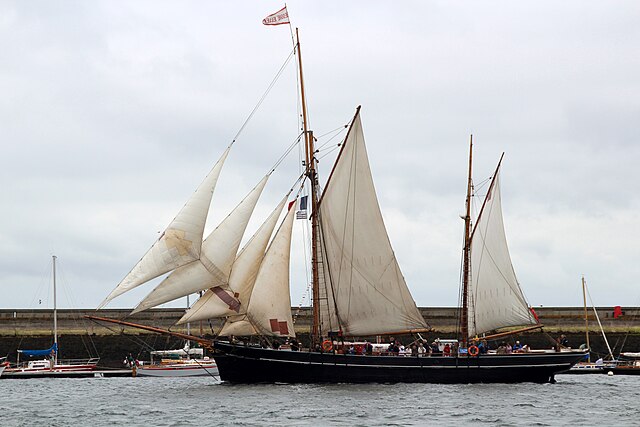A West Country ketch or a Tamar ketch is a two-masted sailing ketch, designed for carrying cargo from the South West England, predominantly from the ports of the River Tamar, to ports on the Celtic Sea, such as Cork.[1][2]

The West Country ketch is a specialist type of ketch designed for the waters of the Celtic Sea. At the peak of nautical trading within this region there were up to 700 West Country trading ketches active, only three such vessels have survived to the modern day. This type of vessel is characterised by having a length between 100 ft - 120 ft, a depth of 10 ft and a beam of 20 ft. This type of vessel has a wide midship section, with a sharp bow and a rounded stern. These vessels can carry 75 - 100 tons in their holds. Its shape was very well suited to trading in the Celtic Sea.[3][4]
The Tamar ketch is relatively shorter than the West Country ketch. It is not only suited to trading in the Celtic Sea, but also travelling up rivers. They were usually built on the banks of the River Tamar. The only current Tamar ketch is the Garlandstone, built by James Goss, in Calstock.
Surviving West Country ketches
| Vessel | Length | Beam | Tonnage | Builder | Date | Place | Ref |
|---|---|---|---|---|---|---|---|
| 115 ft | 20 ft | 87 | William S Kelly | 1904 | Mount Batten, Devon | [5] | |
| 100 ft | 20 ft | 76 | James Goss | 1909 | Calstock, Devon | [6] | |
| 118 ft | 21 ft | 98 | J F Carver & Sons | 1907 | Bridgwater, Somerset | [7] |
Gallery
- The Garlandstone at Morwellham Quay, Devon
- The Irene off of the coast of the Isles of Scilly
- The Bessie Ellen in Dublin, Ireland
- The Garlandstone at Morwellham Quay, Devon
- The Irene in dry dock in Gloucester
See also
References
External links
Wikiwand in your browser!
Seamless Wikipedia browsing. On steroids.
Every time you click a link to Wikipedia, Wiktionary or Wikiquote in your browser's search results, it will show the modern Wikiwand interface.
Wikiwand extension is a five stars, simple, with minimum permission required to keep your browsing private, safe and transparent.





